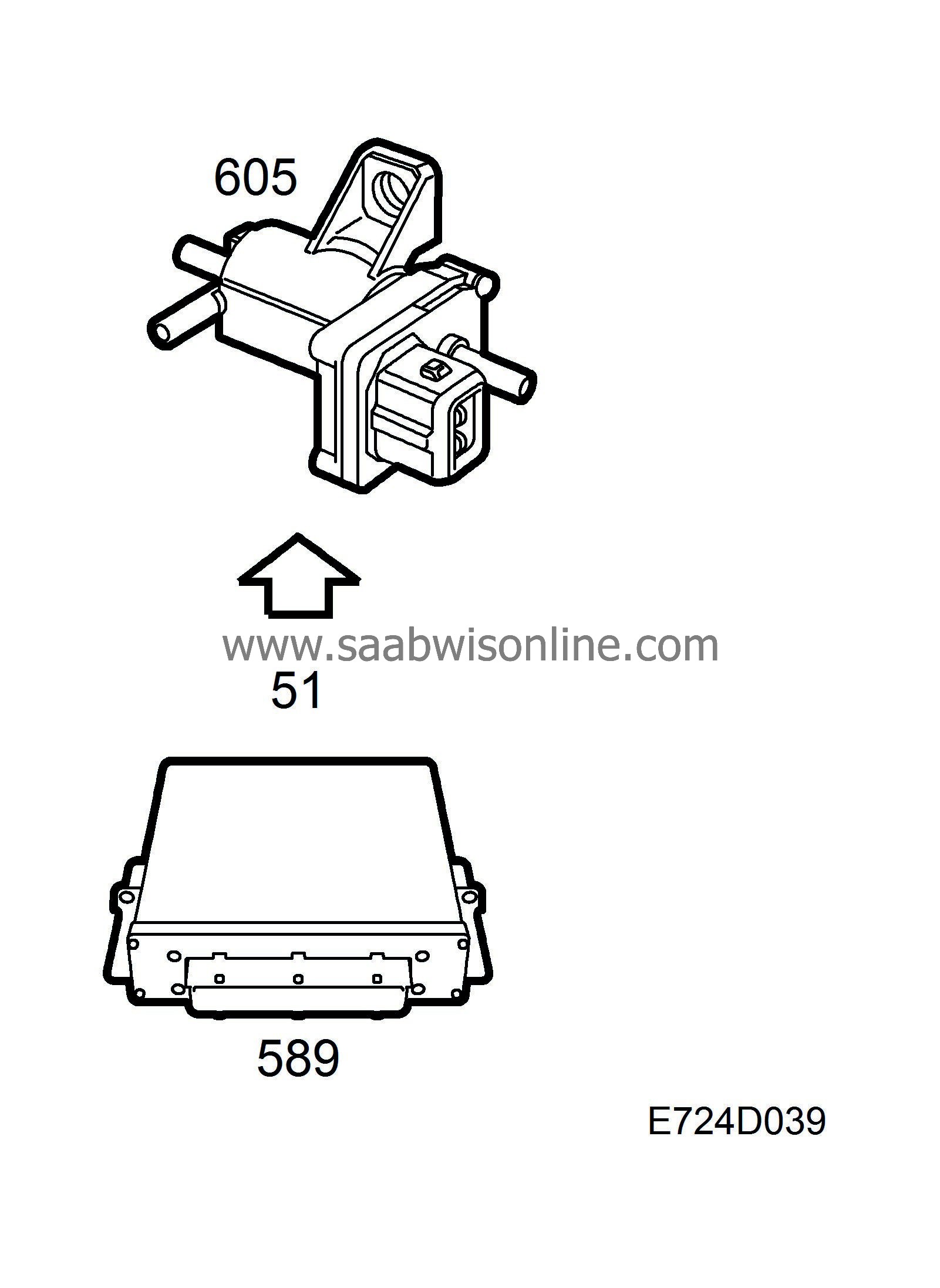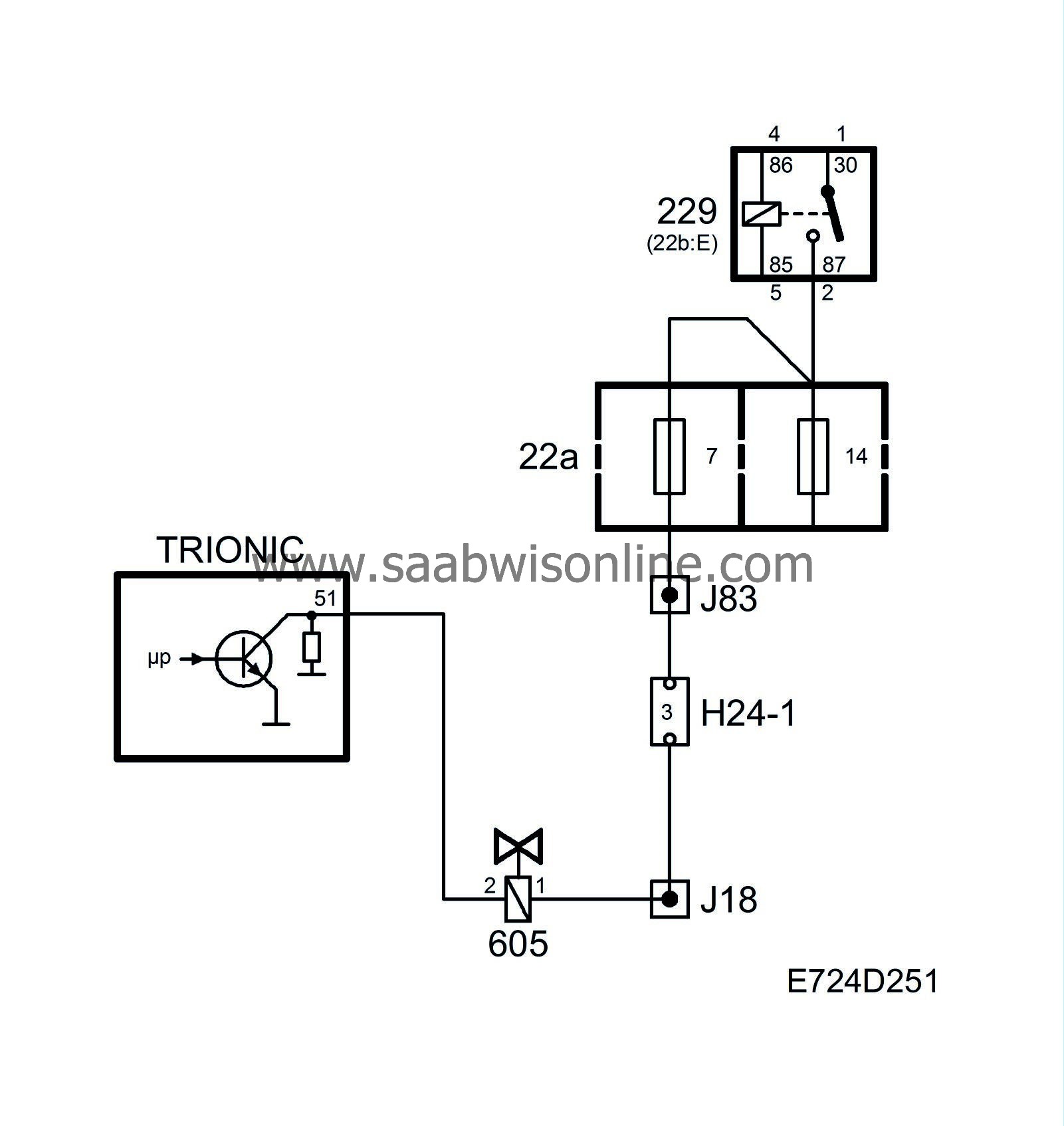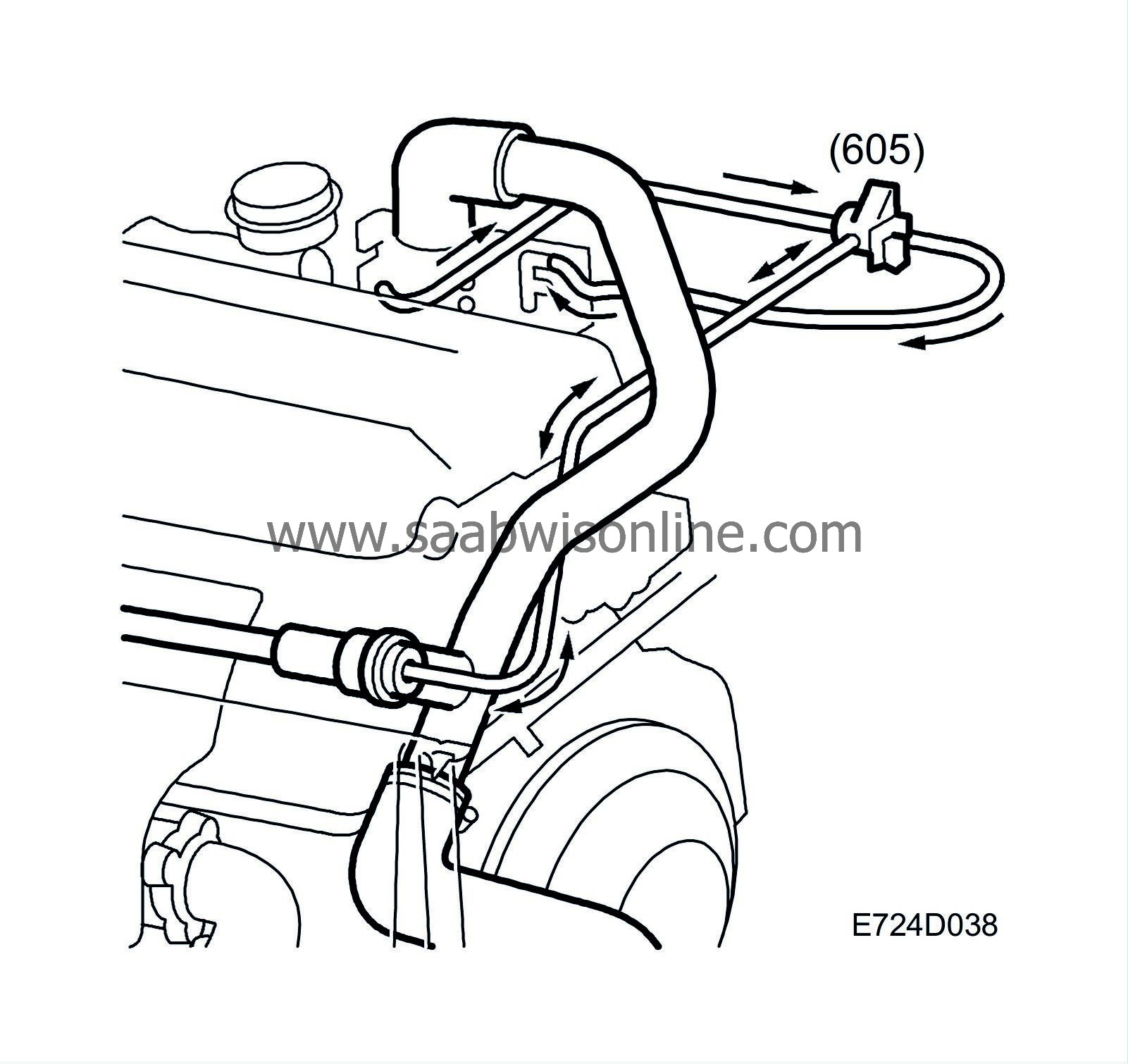PRE-RELEASE
Control valve, bypass
| Control valve, bypass |
To prevent the phenomenon described above, a bypass valve is fitted between the turbocharger outlet and inlet. The valve is opened by the vacuum from the intake manifold.
In a de-energized state, a solenoid valve will connect the bypass valve control line to the intake manifold after the throttle. During deceleration, the vacuum will open the bypass valve and connect the turbocharger outlet and inlet, preventing cavitation. During acceleration, the solenoid valve will operate and the control line will be connected before the throttle. This ensures that the bypass valve is closed securely under normal driving conditions.
The solenoid valve is powered from the main relay and is grounded from control module pin 51.


| Diagnosis |
| • |
If there is an open circuit or short circuit to ground, diagnostic trouble code P1658 will be generated.
|
|
| • |
If there is a short circuit to B+, diagnostic trouble code P1659 will be generated.
|
|
| • |
If the bypass valve fails to open during deceleration, diagnostic trouble code P1110 will be generated.
|
|
| • |
In the event of an internal leak in the bypass valve, the current air mass/combustion will not reach the requested air mass/combustion.
|
|



